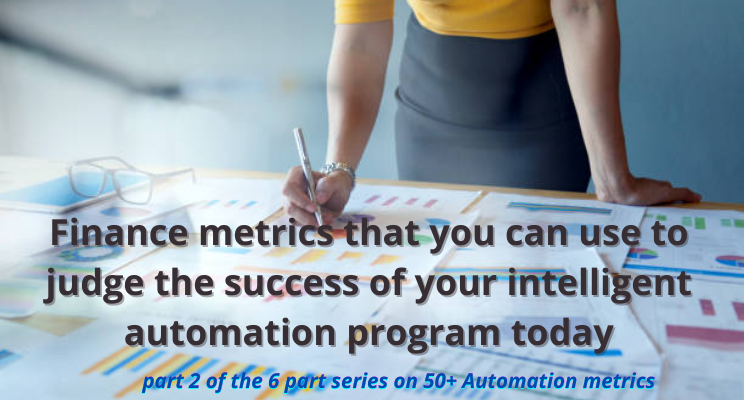40 Essential Selection Criteria to Choose an RPA Platform – Part 3 of 5
The difference between winning and losing at RPA and intelligent automation is very much determined by your choice of technology platform. Make the right choice and your program has a chance of succeeding. Make the wrong choice and you bind yourself into an expensive mistake that can cost you tens, if not hundreds, of thousands of dollars.
Below are the third set of 8 key criteria that should be considered as you select and score your RPA platform. This follows on from part 2 of this series and is part of our #RebootRPA series.
1. Vendor road-map – bind yourself to a large or small vendor that has a solid, well though thought plan for the future that maps to your intelligent automation enabled digital strategy.
“While roadmaps can and do evolve, strategic milestones should be clearly defined – the best RPA companies have a roadmap that shares a compelling vision and tells an ambitious story. Find the company that thinks big and then gets the big things done.”
John Grancarich, Vice President Of Product Strategy
2. Number of existing clients and industry examples – existing volumes of clients can indicate success but the top vendors (and the firms themselves) are struggling to get those clients to move beyond a small number or robots to scale. Whilst a useful guide to product market fit, this number is not always an indicator of success.
“People obsess over this more than they should. Some of the greatest tech I’ve seen in recent years has been created by unknown vendors with a tiny sample of customers…but those customers are quietly smashing it because of the competitive advantage that the tech has given them. The fact that you work with a big name only tells me so much – it tells me you managed to sell your solution to them successfully. It does not tell me whether than solution works for them, how they feel about it, or anything similar. Instead, look for recommendations from people within your trusted network.”
Edward Halsey, RPA Enterprise Account Manager
3. Exception handling capabilities – exception handling is the management of process exceptions in ‘unassisted automations’. You may not be able to plan for every scenario a robot might encounter. Dirty data can cause a robot to stop working. Were humans come across something new they have a manager or colleague to query, robots can’t do that. Robots rely on robot controllers / coders to help answer new queries. How quickly you identify and resolve exceptions will determine how quickly your robots begin to work again. As you become more and more dependent on robots fast exceptional handling is key.
4. Cloud proven and scalable – to scale RPA you need to build on a cloud platform and not all products are cloud ready. Check. Seek reference sites and have a conversation with a vendor cloud architect. Expert RPA cloud architects are an elusive golden goose of RPA specifies who are few and far between. Do mark the strength of sample clients, client satisfaction, and industry references of RPA product users in your business area.
“RPA’s failure to scale has been a big problem. Only three per cent of RPA projects have scaled to more than 50 bots. The received wisdom of RPA implementation is to start with a small pilot and scale up, but I think that unless businesses go into RPA with a bold vision, they’re unlikely to realise the true potential of the technology.”
Ian Hawkins, Editor, PEX Network
5. Web-based interfaces or PC based – how easy is it to control your robots from anywhere at any time? Secure, web-based interfaces offer operable from any device, anywhere offer you a great deal of flexibility as you program grows.
“Web-based interfaces are a must…period! Nobody in your IT department wants to be managing the proliferation of yet another desktop application and its associated installations, product upgrades, patches, O/S version support and hardware requirements; and nobody in your business wants to put another obstacle in the way of success.”
Paul Arnold, Head of Product and Development at Cortex Intelligent Automation
6. Scheduling functionality – can you set in place times or logic to get your robots to trigger actions? If you robots need to remain always on for a process to run, you can find that you need many robot licences (and much cost) to run many processes. Having total control over when, which and how many robots run will not only help your cost management, but this will also provide layers of control over process completion 24/7, 365 days per year.
“While some RPA tools have easy-to-use scheduling solutions which allow you to control your resource and license usage, it’s worth considering coding a custom scheduler – outside of the RPA tool (e.g. utilizing web services or RPA tool’s own API). You can then have total control over your robots’ work and avoid potential problems with low utilization of resources and licenses.”
Jan Mastalski, Lead RPA Developer at innogy
7. Version control and code repositories (e.g. git hub integrated) – does the product have code and system version control? if you delete a sizeable chunk of code in error can you recover fast or is the code gone for ever? if you are auditing what happened, and when, by whom have you the code that was executed then (but since changed) easily to hand for your audit team or is this lost forever?
8. Flexibility of licence model – are you locked into a robot per process model or can your robots, just like human workers, run many processes every day? The first model can be very expensive if you have a lot or different processes to robotise.
“Don’t tie yourself into a one robot, one process licence model. Humans complete multiple tasks a day; to maximise the value your get from your robots, they need to be able to do the same. Maximise the utilisation of your robots to get the maximum return from your investment in your RPA platform”
Matthew Coffey, RPA Delivery Lead at Pearson
Selecting the right RPA tool or indeed intelligent automation tools is key to the success of your RPA journey. Get your tool selection right and you give yourself every chance of success. Get your tool of choice wrong and your costly business error may result in a loss of money and indeed your job.
What do you consider to be the most important criteria for selecting an RPA platform?
This article is part of a #RebootRPA series. #RebootRPA is a series of articles written by real world experts to help you overcome the challenges of selecting, implementing and scaling an RPA platform.
- RPA Reboot: RPA 101
- 14 rules for Robotic Process Automation (RPA) and Intelligent Automation (AI) success
- If you are not willing to go all in, then don’t put on your RPA swimsuit.
- The biggest lie told to RPA customers – 50 robots equals success
- 40 essential selection criteria to choose an RPA platform part 1 of 5
- 40 essential selection criteria to choose an RPA platform part 2 of 5
- 40 essential selection criteria to choose an RPA platform part 3 of 5
- 40 essential selection criteria to choose an RPA platform part 4 of 5
- 40 essential selection criteria to choose an RPA platform part 5 of 5
Tag and share: If this could benefit someone else tag them and share this.
Free to reuse: If you want to post this article on your LinkedIn page then please feel free to do so. The more information we share within the RPA community the more likely businesses are to succeed with this excellent technology.
Further Help: If I can help you in any way please do reach out.
Note: The views expressed above are my views and not those of my employer.








Leave a Reply